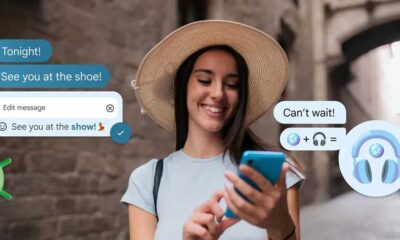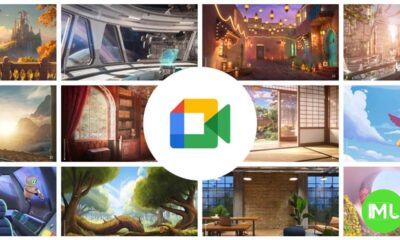Android 15 introduces true variable refresh rate support, but there are limitations

Android 15 Brings True Variable Refresh Rate (VRR) Support
Most modern Android smartphones, including mid-range and flagship devices, come equipped with high-refresh-rate displays. These screens often operate at fixed rates like 60Hz, 90Hz, or 120Hz. Even some budget phones now feature refresh rates above the standard 60Hz. However, while many phones boast this feature, they lack true variable refresh rate (VRR) technology. Despite manufacturers marketing VRR support through LTPO (Low-Temperature Polycrystalline Oxide) displays, Android itself didn’t fully support VRR until the release of Android 15.
What Is Adaptive Refresh Rate in Android 15?
With Android 15, Google has introduced Adaptive Refresh Rate (ARR), a form of VRR, directly into the operating system. Previously, Android could switch between different fixed refresh rates like 60Hz and 90Hz based on the display mode. However, this was not a true adaptive system. The operating system would switch modes based on content but couldn’t seamlessly adjust refresh rates within a single mode.
In Android 15, ARR dynamically adjusts the refresh rate according to the content’s frame rate without needing to change display modes. This ensures a smoother user experience by adapting the screen refresh rate on the fly, whether you’re watching a video or playing a game.
Benefits of True Variable Refresh Rate in Android 15
Google highlights two main benefits of the ARR feature in Android 15:
- Power Efficiency: By allowing the display to operate at lower refresh rates when high refresh rates aren’t necessary, the device consumes less power. It ramps up the refresh rate only when the content requires it, reducing unnecessary battery drain.
- Improved Performance: Since ARR eliminates the need to switch between different display modes, it reduces potential “jank” or stuttering issues that occur during mode transitions, offering a smoother visual experience.
Why Wasn’t True VRR Supported Before?
Although smartphone manufacturers have promoted variable refresh rate features with LTPO displays, these implementations were limited. LTPO displays allowed for a broader range of refresh rates, from as low as 1Hz or 10Hz up to 120Hz. However, this was achieved by toggling between fixed display modes rather than dynamically adjusting within a single mode.
For example, on many Android devices with LTPO OLED panels, the refresh rate could drop to 10Hz during static content like reading, then jump to 120Hz during gaming. However, these changes were still tied to pre-defined modes and didn’t dynamically adapt based on real-time content needs, unlike true VRR seen in PC gaming monitors.
Technical Advancements in Android 15
In previous Android versions, some OEMs tried to implement VRR-like features at the kernel level. However, this approach required custom logic for each device, making it difficult to standardize due to Android’s Generic Kernel Image (GKI) requirements. The kernel, responsible for managing hardware, lacked deep insights into the content being displayed, limiting its ability to adjust the refresh rate effectively.
Android 15 addresses this by implementing VRR at the Hardware Composer (HWC) HAL (Hardware Abstraction Layer) level, specifically with the introduction of version 3 of HWC HAL APIs. This allows the operating system to make more informed decisions about when to adjust the refresh rate based on the content displayed. It offers a unified method for OEMs to implement adaptive refresh rates without needing complex customizations at the kernel level.
Device Compatibility and Challenges
While Android 15 introduces true VRR support, not all devices will be able to use it right away. For a phone to take advantage of this feature, it must have support for the updated HWC HAL version 3. Currently, devices like the Google Pixel 7 and newer models, as well as those powered by the Qualcomm Snapdragon 8 Elite chip, have this version. However, older devices, including the Google Pixel 6 series and phones using the Qualcomm Snapdragon 8 Gen 3, do not support the necessary HAL version.
Additionally, even if a device receives an update to Android 15, it may not support ARR due to hardware limitations or the effects of Google’s Requirements Freeze (GRF) program. This program prevents mandatory hardware changes in updated devices, so phones designed before the release of HWC HAL version 3 may not fully support Android 15’s adaptive refresh rate features.
Future Impact and Expectations
If Android 15’s adaptive refresh rate feature is widely adopted, it could lead to better performance and battery efficiency in everyday use. For instance, it may help devices reduce the refresh rate to 30Hz or 24Hz when playing films, rather than defaulting to 60Hz, which could conserve battery life.
However, it’s important to note that Android 15’s implementation is not the same as the true VRR seen in gaming PCs, where the refresh rate matches the frame rate of the game. Instead, Google’s documentation indicates that the adaptive refresh rate in Android 15 only supports rates that are divisors of the display’s native refresh rate to prevent tearing effects.
This means that while Android 15’s ARR feature offers significant improvements, it may not provide full synchronization between game frame rates and display refresh rates, as seen in PC monitors with NVIDIA G-Sync or AMD FreeSync.
Looking Forward
As more details emerge and updates roll out, it will be interesting to see which existing devices fully adopt Android 15’s adaptive refresh rate capabilities. Google’s future Pixel devices are likely candidates for early adoption, but broader support will depend on how quickly OEMs implement the necessary hardware and software changes.
In conclusion, Android 15 marks a significant step forward in providing true VRR support at the operating system level. While the feature is promising, its real-world impact will depend on device compatibility and OEM adoption. Users can look forward to a smoother experience and potentially better battery life, making it a long-overdue but welcome addition to the Android ecosystem.
Google Meet gets a fresh new look with Material 3 design

Google Meet is getting a big update to its look, thanks to the new Material 3 design. This change brings a cleaner and more modern style to the video calling app, making it easier and more enjoyable to use.
With Material 3, Google Meet now has rounder buttons, softer colors, and better spacing between elements. The main controls, like the microphone, camera, and end call buttons, are now larger and easier to tap. The icons and text are also clearer, which helps users find what they need quickly during a call.
Another improvement is the new “expressive” color system. This feature lets the app’s colors match your device’s wallpaper or theme, giving each user a unique and personalized experience. The changes also make Google Meet more accessible, as the new design is easier to read and use for everyone, including people with vision difficulties.
These updates are rolling out to both web and mobile versions of Google Meet. Google says the new look will help people feel more comfortable and focused during their meetings. Overall, the Material 3 update makes Google Meet not only look better but also work better for all its users.
Android
Easy ways to change Android Auto’s look with light and dark themes

Android Auto is a helpful tool that lets you use your phone’s apps safely while driving. It connects your phone to your car’s screen, making it easier to use maps, music, and calls. One of the features many people like is the ability to change how Android Auto looks by switching between light and dark themes.
How to switch between light and dark themes
Android Auto offers two main themes: light and dark. The light theme uses brighter colors, which can make the screen easier to see during the day. The dark theme uses darker colors, which can be more comfortable for your eyes at night or in low light.
To change the theme, follow these steps:
- Open the Android Auto app on your phone.
- Go to the settings menu.
- Find the “Theme” option.
- Choose between “Light,” “Dark,” or “Set by car” (this lets your car decide the theme based on the time of day or your car’s settings).
Why themes matter
Using the right theme can make driving safer and more comfortable. The light theme is good for bright days, while the dark theme helps reduce glare at night. Having these options means you can pick what works best for you, making Android Auto easier to use in any condition.
In short, Android Auto’s theme options are simple to use and help you drive more safely by making the screen easy to see, no matter the time of day.
Google Drive and Files by Google get fresh updates for easier use

Google is rolling out some helpful updates to two of its popular apps: Google Drive and Files by Google. These changes are designed to make managing your files and watching videos much smoother.
First, Google Drive is getting a new video player. Now, when you upload a video to Drive and open it, you’ll notice a fresh look that matches Google’s latest design style. The controls, like play and pause, are easier to use and look cleaner. This update makes it simpler to watch videos directly in Drive without needing to download them first.
Meanwhile, the Files by Google app is also getting a makeover. The app is adopting Google’s Material 3 design, which means it looks brighter and more modern. The buttons and menus are easier to see and use, making it simpler to find, move, and organize your files. There are also new color options and improved icons, so everything feels more user-friendly.
Both updates show Google’s commitment to making its apps more helpful and enjoyable to use. Whether you’re watching videos in Drive or sorting files on your phone, these changes aim to save you time and make things less complicated. If you use these apps, keep an eye out for these new features—they should arrive soon!
-

 Apps1 year ago
Apps1 year agoGboard Proofread feature will support selected text
-

 News1 year ago
News1 year agoSamsung USA crafting One UI 6.1.1
-

 Apps1 year ago
Apps1 year agoGoogle Contacts app testing new Besties Widget
-

 AI12 months ago
AI12 months agoGoogle Pixel 9 Pro may come with a complimentary one-year Gemini Advanced subscription
-

 Apps12 months ago
Apps12 months agoGoogle working on a new video editing feature for its Photo app
-

 Apps12 months ago
Apps12 months agoGoogle Maps lets you report traffic jams and accidents on Apple CarPlay, but not on Android Auto
-

 News1 year ago
News1 year agoBreaking: Samsung Galaxy S22 may get Galaxy AI features
-

 Apps1 year ago
Apps1 year agoGoogle Messages app will transform MMS chats into RCS










